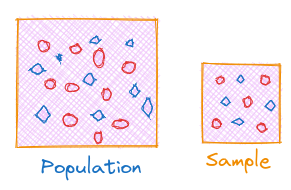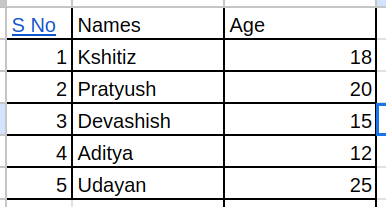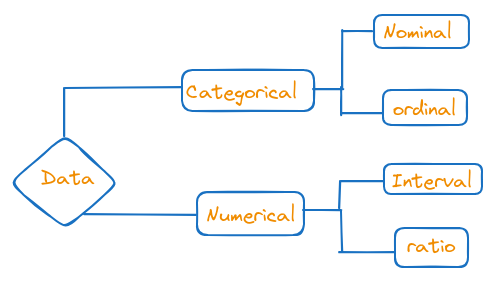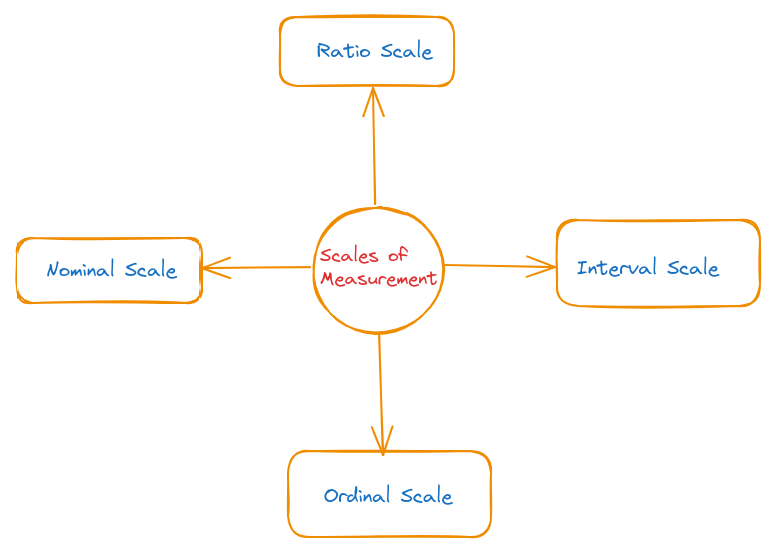Statistics For Data Science
 Kshitiz Rana
Kshitiz Rana(Week1)
1 Statistics
-> Art of learning from data
-> Concerned with collection of data
-> Subsequent Description and Analysis
1.1 Population: Total collection of all the items/elements that we are interested in.
1.2 Sample: Subset of the population used for detailed study.

Example: Suppose we take water bottles of all the boys in a hostel and randomly select 25 bottles. It is concluded that the capacity of 25 water bottles is 1L/bottle. Hence, the Sample consists of 25 bottles and the population consists of all the water bottles from the boy's hostel.
Major Branches of Statistics
Descriptive Statistics: Statistics which is concerned with the description and summarization of the main features of the dataset.
Inferential Statistics: Branch of statistics used to conclude from the data.
2 Data
Facts and figures collected, analyzed, and summarized for presentation and interpretation.
Types of data:
Unstructured Data: Dataset that is not organized in a predefined manner. Unstructured data requires more work to process and understand.
Ex: YouTube comments, Image files etc
"Data scattered with no structure "
Structured Data: Data that has a standardized format for efficient access by software and humans alike. structured data is easy to analyze and understand.
2.1 Variable and cases
Case(observation)/Row: Observation for which data is collected. (For each case same attribute is recorded.)
Variable/Column: Attribute that varies across all units. (The same type of value for each case is recorded.)
For ex.

In the above table, the individual name and age is a case(observation). While all names and ages in a column are Variables.
Classification of data

Categorical Data(Qualitative variable):
When observations can be classified into one of the categories instead of being measured numerically.
(*cannot perform any meaningful mathematical operation*)
For example, we have students' data from different colleges. The gender of students is categorical data because we have M or F categories to select.
Numerical data(Quantitative variable):
Describes the numerical properties of the data. It will always be a numerical value.
(*Mathematical operations can be performed*)
Ex- We have a dataset of students from different branches of a college. The number of students in a branch is the numerical property of data as the number of students is 60(assumed).
Time series Data:
Data recorded over a period of time is called time series data.
Ex- Temperature of place in 10 days
Cross-Sectional data:
Data recorded at the same time in different cases is called crossectional data.
Ex- Temperature of Dehradun, Chennai and Kanpur on the same day
Scales of measurement of data

Nominal Scale: Measurement scale in which number serves as "tags" or "labels" only, to identify an object.
Ex- Discomfort of disease
1- mild
2-Moderate
3-Severe
Here 1=mild, 2=moderate and 3= severe in which 1,2,3 does not have numerical value rather it is used as labels for mild, moderate and severe.Here order or rank doesn't matter.
(*No ordering in the variables*)
Ordinal Scale: Data that exhibits properties of nominal data and the rank or order is meaningful is called ordinal scale.
(Distance between data is unknown)
Ex- Service rating by the customers
1-poor
2-good
3-excellent
here rank of rating matters therefore the scale is ordinal.
Interval Scale:
Similar to the ordinal scale and the distance(interval) between the values is expressed in terms of a fixed unit measure, the scale is called the interval scale.
Ex- Consider the temperature in the refrigerator is 6°C and the temperature outside the refrigerator is 35°C. The difference is 29°C.
Ratio Scale:
Similar to the interval scale and the ratio of the two values is meaningful, the scale is called the ratio scale.
Ex- For the marks of two students ratio is meaningful.
Thank you for reading my blog. (If any mistakes or corrections are required do comment below.)
Subscribe to my newsletter
Read articles from Kshitiz Rana directly inside your inbox. Subscribe to the newsletter, and don't miss out.
Written by

Kshitiz Rana
Kshitiz Rana
I am a CSE undergrad.